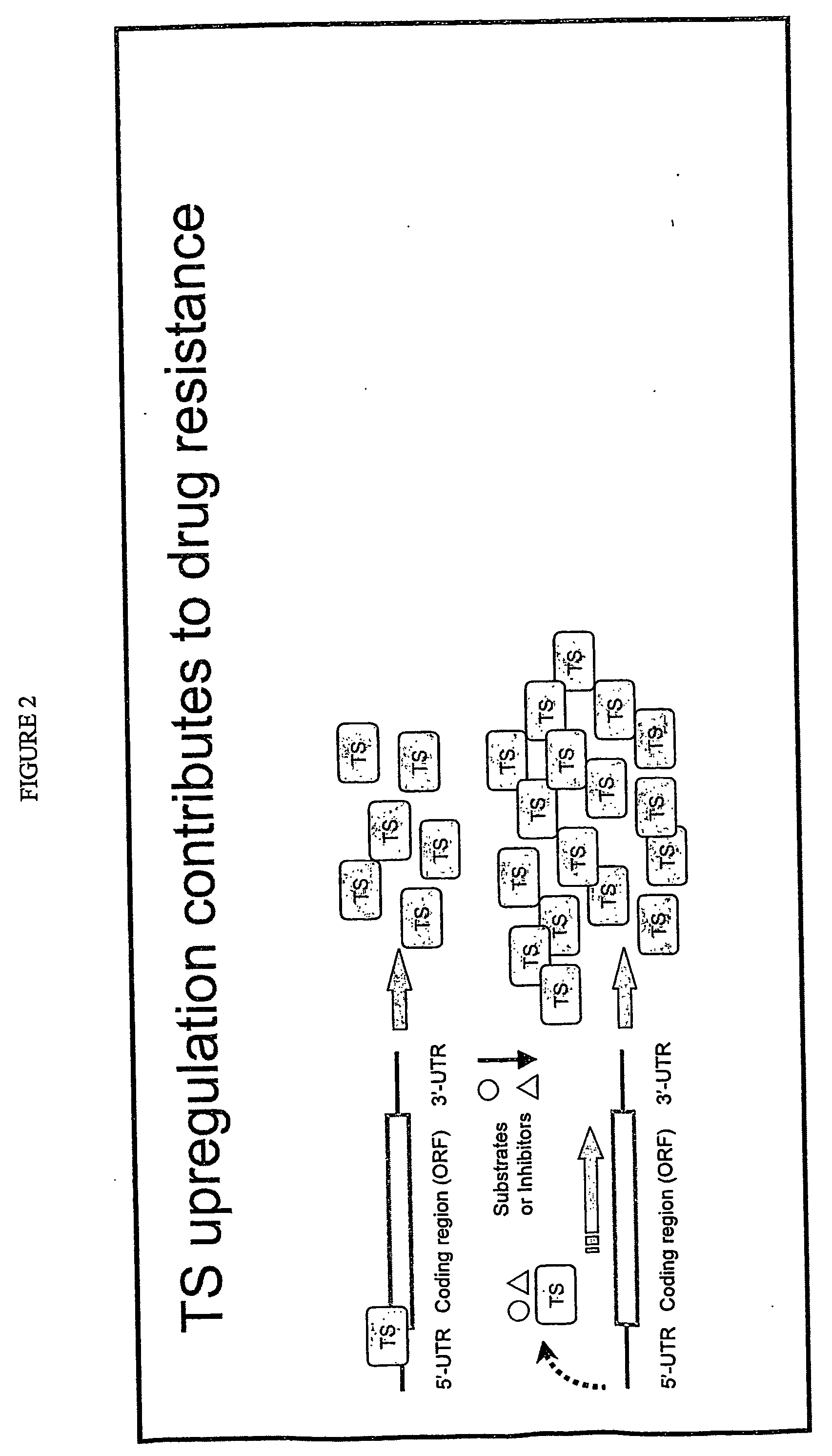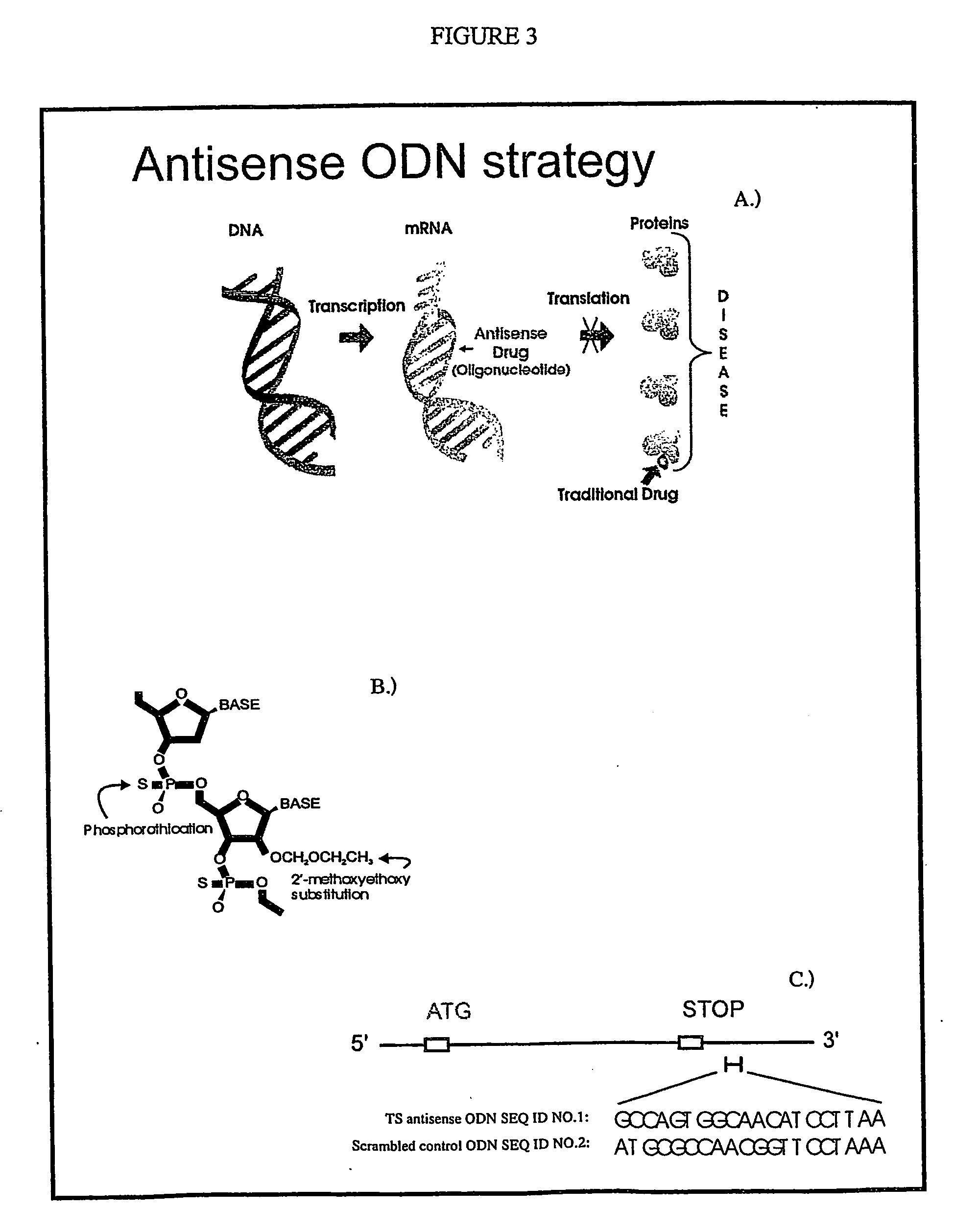Antisense oligonucleotides for identifying drug targets and enhancing cancer therapies
a technology of anti-cancer drugs and anti-oligonucleotides, applied in the field of anti-cancer drugs, can solve the problems of dose-limiting toxicity and outgrowth, and achieve the effect of reducing one or more dose-limiting toxicities and increasing the bioavailability of fluoropyrimidine-based drugs
- Summary
- Abstract
- Description
- Claims
- Application Information
AI Technical Summary
Benefits of technology
Problems solved by technology
Method used
Image
Examples
example 1
[0140] To test the effect of ODN SEQ ID NO: 2 on the expression of genes (other than the gene encoding for TS) HeLa cells were treated with 100 nM TS antisense ODN SEQ ID NO: 2 or scrambled control ODN SEQ ID NO: 8 using 1 μg / ml LipofectAmine 2000™ (InVitrogen). Cells were collected at various times (8, 16, 24 and 48 hours) and RNA isolated using TriZol™. Reverse-transcribed cDNA was labelled with Cy3- or Cy5-dCTP, using CyScribe™ (Amersham). Microarrays containing 1716 human genes were obtained from the Ontario Microarray Consortium (Toronto, Canada). Hybridization was completed at 42° C. overnight, followed by high stringency washes at 60° C. with 0.1×SSC, 0.2% SDS. Slides were scanned on a ChipReader™ scanner (Virtek Vision Inc., Waterloo, Canada) and signals were quantitated with ArrayVision™ (Imaging Research, Inc. St. Catherines, Canada). Data was analyzed using GeneSpring™ version 4.1.5 (Silicon Genetics, Redwood City, Calif., USA).
[0141] The effects of ODNs...
PUM
| Property | Measurement | Unit |
|---|---|---|
| Bioavailability | aaaaa | aaaaa |
| Toxicity | aaaaa | aaaaa |
| Chemotherapeutic properties | aaaaa | aaaaa |
Abstract
Description
Claims
Application Information
 Login to View More
Login to View More - R&D
- Intellectual Property
- Life Sciences
- Materials
- Tech Scout
- Unparalleled Data Quality
- Higher Quality Content
- 60% Fewer Hallucinations
Browse by: Latest US Patents, China's latest patents, Technical Efficacy Thesaurus, Application Domain, Technology Topic, Popular Technical Reports.
© 2025 PatSnap. All rights reserved.Legal|Privacy policy|Modern Slavery Act Transparency Statement|Sitemap|About US| Contact US: help@patsnap.com



